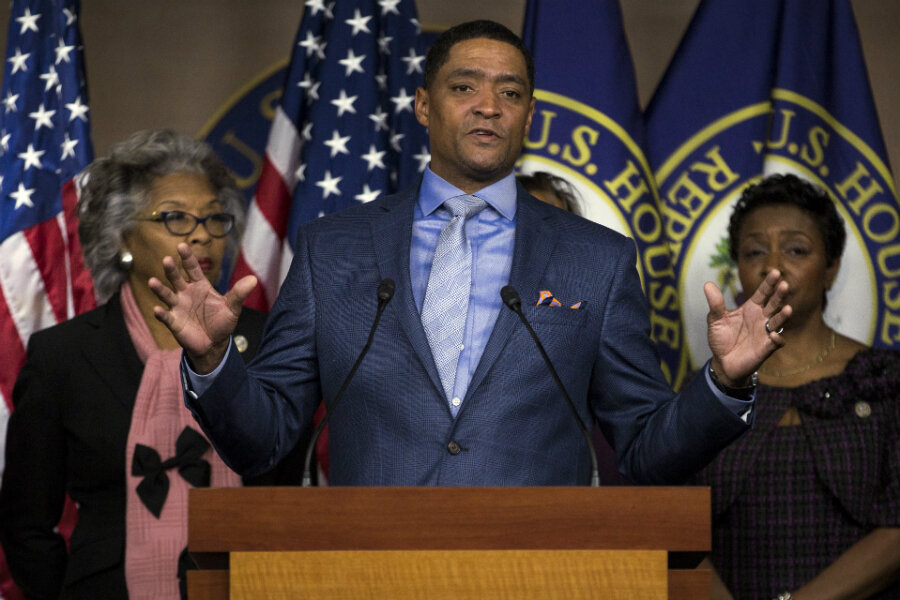How Washington, D.C., is using social media to find missing children
Loading...
On Tuesday, Rep. Cedric Richmond (D) Louisiana, who is the Congressional Black Caucus chairman, and Delegate Eleanor Holmes Norton (D) of the District of Columbia sent a letter to Attorney General Jeff Sessions and FBI Director James Comey.
Their topic of concern? The 501 missing-juvenile cases reported in Washington, D.C., since the beginning of this year. In their letter, obtained Thursday by the Associated Press, they urged the attorney general and Mr. Comey to "devote the resources necessary to determine whether these developments are an anomaly or whether they are indicative of an underlying trend that must be addressed."
As grim as that statistic sounds, it’s in keeping with the District’s annual missing-juvenile numbers, which have ranged between 2,000 and 2,600 over the past five years. Many of the children are also minorities. All but 22 of this year's cases have been resolved.
Why are Representative Richmond and Delegate Holmes Norton speaking up now? While the number of missing youths in the District hasn’t dramatically increased, local police Commander Chanel Dickerson has become more vocal about the cases when they occur, increasingly using social media to spread the word when kids go missing – an important first step toward getting them back.
“We applaud Commander Dickerson for her efforts to bring attention to all missing children in the District, not just those that are classified as critical,” says Robert Lowery, vice president for the missing child division at the National Center for Missing and Exploited Children (NCMEC).
Since 1998, “Amber Alerts” have warned Americans to be on the lookout for missing children. But not all cases warrant one; each Amber Alert requires that law enforcement have “reasonable belief ... that an abduction has occurred,” and that the victim is in “imminent danger,” and to have descriptive information to assist in a recovery.
In 2016, however, 90 percent of the cases that NCMEC handled didn’t meet these criteria. Instead, they fell under the “endangered runaways” category. This falls outside the purview not just of the Amber Alert system, but also public sympathy.
“I can frankly tell you that when we start talking about runaway children, we're dealing with a de-sensitized media and public,” Mr. Lowery explains in a phone interview with The Christian Science Monitor. “The automatic assumption is that these children are [having] behavioral problems.”
In reality, he continues, they’re often fleeing abuse or grim family lives. The Fox affiliate in Washington, for example, recently highlighted one local girl who vanished for a week – then returned – earlier this month. Life at home had felt cramped: She had been living “crammed in a small two-bedroom apartment with seven others.”
As the Huffington Post’s Julia Craven pointed out last week, the approximately 170,000 black minors who went missing last year are more likely to have fled situations like these. “Black and [Latino] teens, on average, are more vulnerable to the type of abuse that provokes a teen to run away from home because they are more likely to live in high-risk environments.”
By extension, they’re also less likely to receive media coverage. Mr. Lowery explains that “When we start talking about runaway children ... we can hardly buy media time to share it with the public.”
Last January, upon her promotion to commander of the Metropolitan Police Department’s youth and family services division, Ms. Dickerson set out to change this situation. As the Washington Post’s Peter Hermann reported last week: “Police have begun to publicize every missing person in the District whose case is deemed ‘critical.’ That definition includes anyone age 15 and under, including chronic runaways, and people 65 and over. In the past, publicizing such cases was discretionary.”
A rise in tweets from the MPD’s Twitter account initially prompted alarm and frustration among local parents, leading Dickerson, Acting Police Chief Peter Newsham, and Mayor Muriel Bowser to make clear that the number of cases hadn’t gone up – they were just giving them more attention.
She's also underscored the department's effectiveness at solving these cases. “So far in 2017," Dickerson explained last week, "95 percent of our cases have been closed.”
The MPD has already proved its efficiency at closing cases – out of 2,242 juveniles reported missing last year, only four are still open cases. It's too soon to tell whether social media is strengthening recovery efforts further, but Lowery is optimistic.
“One of the most powerful tools that we have in finding children is the engagement of the public, as the eyes and ears of law enforcement, to report sightings or any information they have about that child.”
While Twitter and Facebook can pose dangers to underage users, he says they can also serve the end of locating missing minors.
"Social media has been a big game-changer," he explains. "If a child goes missing, we can engage the public and get 'em back quickly."






